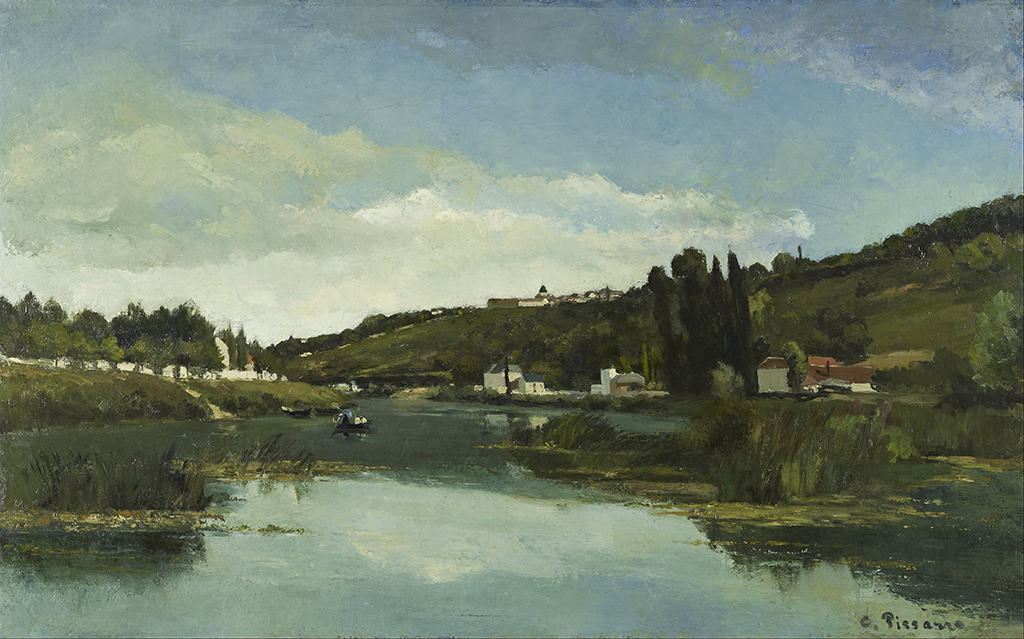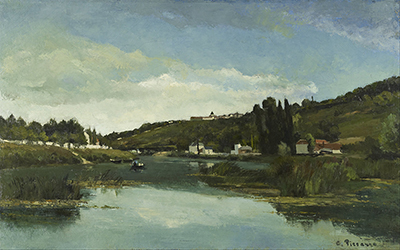The Marne at Chennevieres is oil on canvas painting by Camille Pissarro. Currently, it is found in the Edinburgh National Gallery in Scotland, and it was completed in the year 1864. During the painting of the Marne at Chennevieres, Camille Pissarro was influenced by the landscapes that were developed by the artists of the Barbizon School.
As the pioneering advocate, Camille Pissarro took the easels outdoors to capture each subtle variation of the natural colour and light. The serene vista of the Chennevieres on the Banks of Marne with a broad, calm and low sky as well as reflecting waters recalls the canals and rivers painted by the Barbizon School artists. Strong greens, whites, and blues dominate the landscape of this artwork with its expanse of water and sky interrupted by the sloping banks.
As most critics often point out, it is difficult for art lovers to see and feel what was offensive and scandalous about Impressionism. However, in most cases, their artworks looked improvisational close to the polished works developed by the academic artists who imitate the Old Masters. Just like other artists of the impressionist group, Camille Pissarro wanted to recreate the artistic experience of seeing to redevelop the interplay of colour and light of the world. In most cases, he took this technique as a subject of matter and everyday sights like a hillside lit by the sun, a street full of traffic or a neighbourhood transformed by snowfall were common in most of his paintings.
During his time, Camille Pissarro became a mentor to younger artists including Paul Gauguin and Paul Cezanne. The two were important during the Post-Impressionist period. Camille Pissarro befriended these two artists, painted with them and enhanced their artwork when they were still new to the style and technique of painting as well as outsiders in the famous Paris art world. Also, Pissarro was open to learning from the two young artists. In the year 1885, he started to work with Neo-Impressionists Paul Signac and Georges Seurat, helping them to create their colour theories while adopting their distinctive brushstrokes.
However, in the last decade of his artistic work, Camille Pissarro returned to the Impressionist technique and style where he developed an interest within the human figure especially the peasant ladies who occupied most of his landscapes. Also, he returned to dominate his artwork as a primary expression of his humanism. During the drawing of the Marne at Chennevieres, the net of the comma-like brush strokes that had become his trademark in painting appeared to have reached the logical conclusion, and Camille was longing for new and innovative ways of painting.





